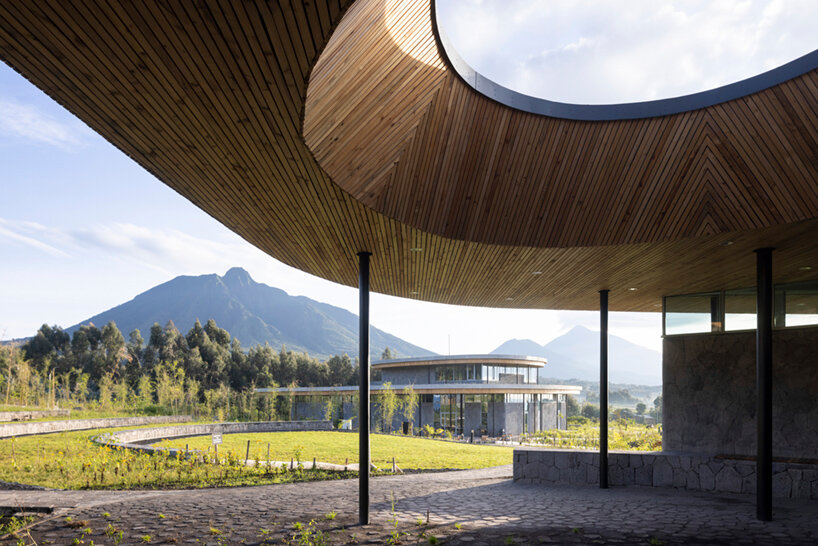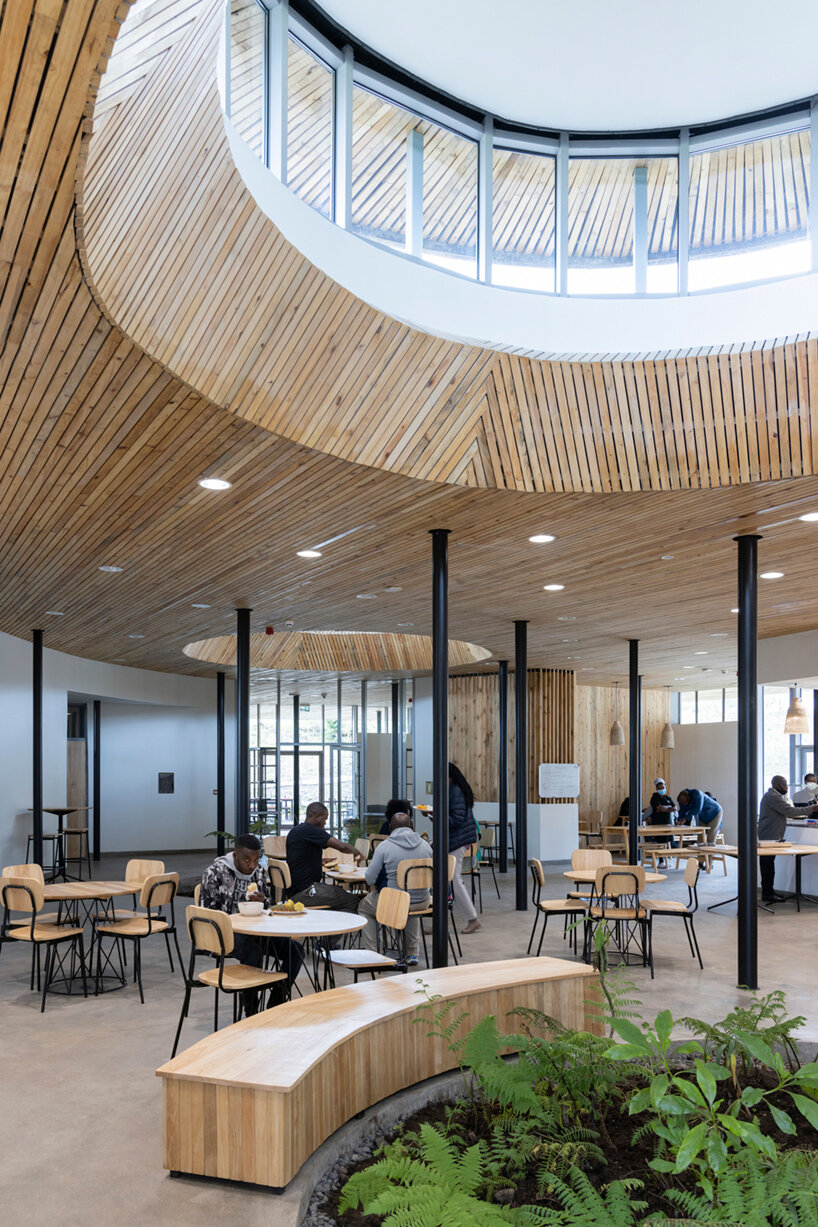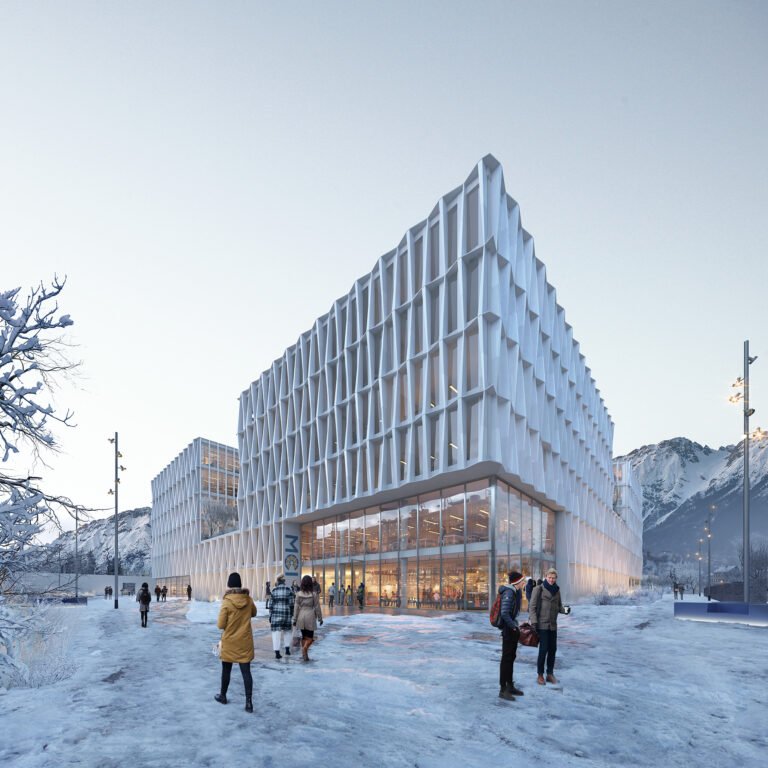MASS design group’s new campus respects lush volcanoes and endangered gorillas of rwanda
the ellen degeneres-funded campus in rwanda
A new school campus appears to emerge from the mountainous landscape of Rwanda, its architecture by MASS Design Group aiming toward conservation and ecological responsibility. With its low stance and ‘reforested’ roofscape, the project has just celebrated its completion, and has come to life with the support of the Dian Fossey Gorilla Fund along with Ellen DeGeneres’ Ellen Fund. Seeking to lightly occupy its site in the Virunga Mountains, the campus recognizes its natural surroundings as a hub for conservation, ecological preservation, and education.
The region itself, defined by a soaring range of volcanoes and lush, sloping forests, is especially vital as it marks the home of around one-third the population of an endangered species of mountain gorillas.
The ‘Ellen DeGeneres Campus of the Dian Fossey Gorilla Fund’ is named for both the TV star and for the conservationist who single-handedly worked to save the mountain gorillas from extinction before she was murdered in 1985. The Dian Fossey Gorilla Fund (see here) is one of the primary training organizations of young African scientists in conservation.
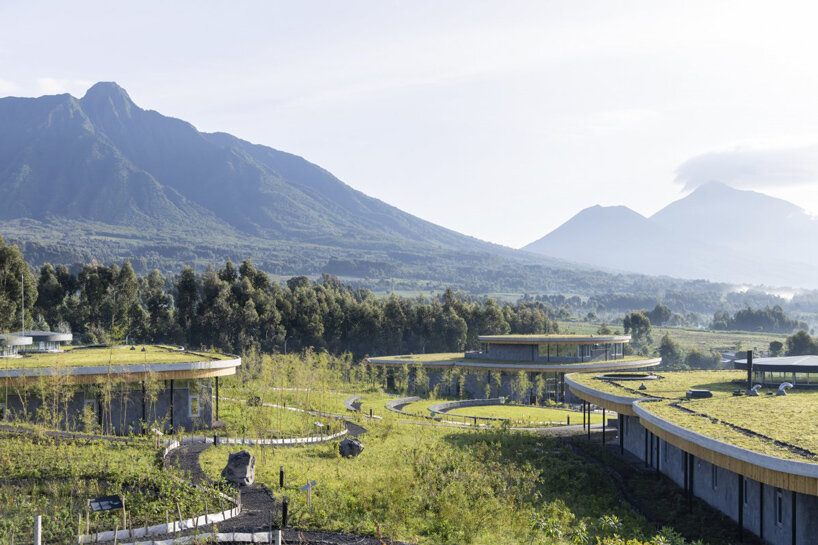
image © Iwan Baan
mass design group preserves the landscape
The architects at MASS design group scatter the built spaces of its Ellen DeGeneres Campus of the Dian Fossey Gorilla Fund across a twelve-acre swath of land in mountainous Rwanda. Throughout the design and construction, local labor and materials were used with the goal of minimizing the project’s footprint. The school thus introduces an immersive, reforested landscape rather than an intrusive construction. What’s more, the team aims to ensure job training and economic return to the local community in addition to its public and educational use.
The campus is organized between three main buildings: the Sandy and Harold Price Research Center, the Cindy Broder Conservation Gallery, and the Rob and Melani Walton Education Center. Alongside these three is housing for visiting students and researchers and a ‘living laboratory.’ This laboratory was introduced along the former agricultural site and saw the planting of more than 250,000 native plants. The use of green roofs, rainwater harvesting, and a constructed wetland for wastewater treatment all perform alongside the living lab.
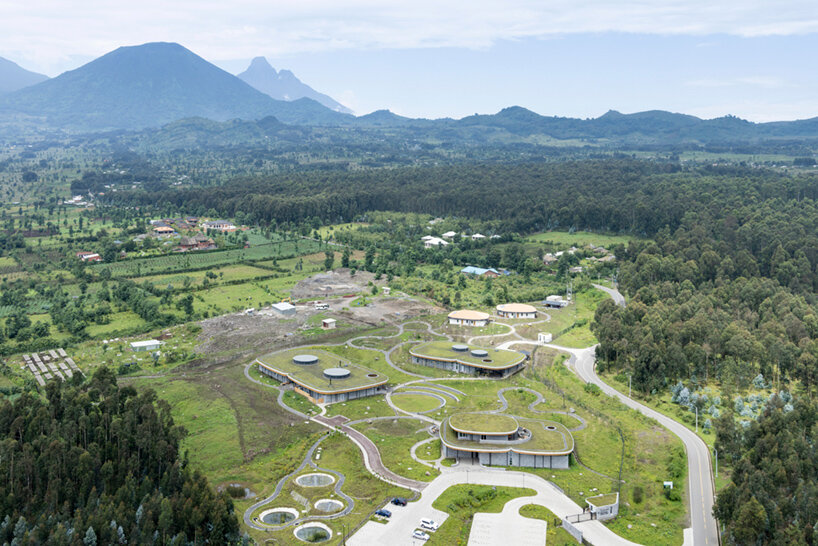
image © Iwan Baan
an educational space for conservation
MASS Design Group had been working with the Fossey Fund since 2015 and have together developed all aspects of the project. This includes the concept, architecture, and landscape design, engineering, construction, furniture fabrication, exhibition design, and media. What’s more, the campus now stands the first project completed by MASS’s construction company, MASS. Build (see here). Overall the undertaking has employed more than 2,400 Rwandans in its design and construction, accounting for 99 percent of its total labor.
Dr. Tara Stoinski, the Fossey Fund’s President and Chief Scientific Officer comments: ‘From the outset, the mission of this project was focused on creating a space to engage the many stakeholders in conservation — students, scientists, tourists, conservation partners, community members — to advance our collective goal of saving gorillas and more broadly, the planet.
‘The beauty of the campus elevates people’s thinking about conservation, helping them realize how important conservation is. This shift is not just important for the Fossey Fund, but for the region and the world.’
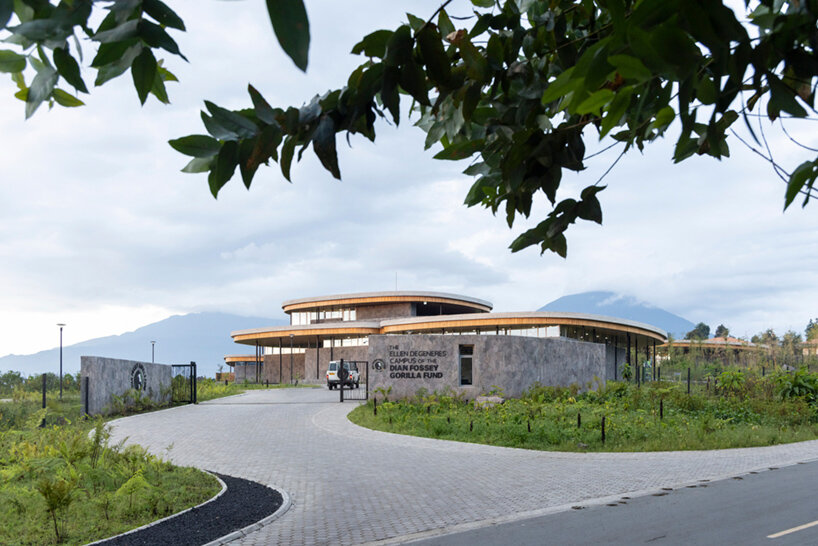
image © Iwan Baan
Michael Murphy, MASS Design Group Founding Principal, and Executive Director continues: ‘The campus demonstrates how new infrastructure can catalyze conservation and species protection. When new buildings, landscapes, and institutions are conceived in the way that the Fossey Fund and Ellen DeGeneres have imagined—to have as much impact as possible — reciprocal opportunities are created.
‘For this campus, that meant the prioritization of local labor, customized fabrication of furniture and fittings created by Rwandan artisans, and environmental stewardship that aligns with the goals of conservation and habitat protection. The campus will do more than inspire a generation of conservation activists in Rwanda, it will model new ways for global conservationists to bind ecosystems and communities in support of one another.’

